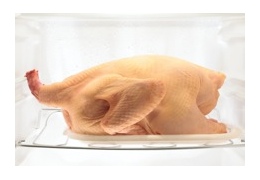
Using imaging technology to detect feces, disease
By Food in Canada staff
Food Safety Research & Development Health & Wellness Meat &Poultry contamination foodborne illness poultry
A technology developed by the Agricultural Research Service (ARS) that automatically scans poultry carcasses for contamination has been successfully tested in a commercial poultry plant, reports the ARS site.

Researchers at the ARS, which is the U.S. Department of Agriculture’s principal intramural scientific research agency, say they have improved the hyperspectral imaging system so that it can detect small amounts of fecal contamination.
Hyperspectral imaging
Hyperspectral imaging is a technique that combines digital imaging with spectroscopy, creating individual wavelengths of light that pinpoint contaminants.
To test the technology commercially, a prototype was installed in a commercial poultry plant to detect contaminated carcasses.
Carcasses were imaged after evisceration but before washing, at a rate of 150 birds per minute. The system ran for several days without hardware or software problems and demonstrated its feasibility.
Detecting disease
Another team of ARS scientists are using the same hyperspectral imaging technology but at different wavelengths to develop an online imaging system to differentiate systemically diseased poultry carcasses from wholesome ones.
The ARS groups and their industry partner are now merging the fecal-detection and diseased-carcass-detection systems onto a common platform that includes a line-scan hyperspectral imaging camera, lighting, and operating and detection software.
Merging the two systems will aid in commercialization by creating one interchangeable imaging system that can be installed in different locations of the processing line to solve two separate and significant processing problems.
Print this page